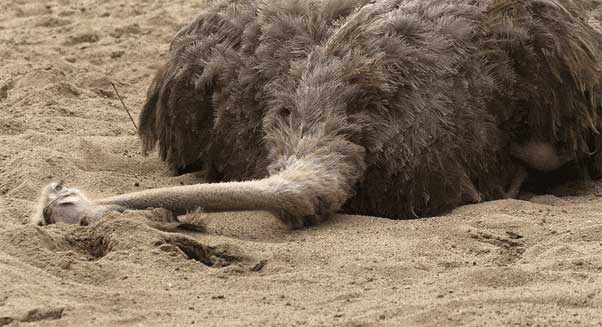
If you happen to have read a 1000-word essay on nature and wild animals, you will find 900 of them describing facts and information that you have not previously known. This appears to be a proven rule even though it carries a lot of exaggeration; Although this rule is my own personal and did not exist before a few seconds, but come on … It is nature! Where every turn carries a surprise or shows an unknown side in the life of an animal.
Thus, the news comes to us with a lot of funny or strange information about the distant animals there in the Amazon jungle, savannah weeds or the depths of the ocean, so we grab them in enthusiasm. Leave information from parents and friends. There is no way to refute any information with logic because nature is not subject to it often. Only if you like certainty, you should search, and most people do not like to search.
Here are some famous myths of the animal world with a statement of truth instead of:
Myth: Sharks can smell a single blood drop from miles away
Truth: This is a huge exaggeration. The shark surrounding you will not be cut if you are bleeding in the water. The shark has a much larger brain region than humans have to treat and receive odors, giving it the ability to detect blood and smell its odor in a ratio of one to 10 billion parts of water. Not impressed as much, it means he can recognize a drop of blood in the waters of an Olympic swimming pool and not beyond that!
In the ocean, the matter is in stages, so it takes a lot of time for the smell of blood to reach the shark through ocean currents. On a clear day with strong winds, the shark may be able to smell the smell of its victim, which is bleeding hundreds of meters away.
Myth: Giraffes sleep only 30 minutes a day
Truth: We do not believe giraffes know the multi-phase sleep system that we have known before in the world of creativity! As with other day animals, giraffes get a good night’s sleep and follow very natural sleep patterns.
To refute this myth, a group of researchers monitored a herd of giraffes consisting of 5 adult giraffes and 3 young giraffes for 152 days, noting their rapid naps and long sleep spells. In the end, they settled for the pattern giraffes follow: sleep at night with snooze naps in the afternoon … just as we humans do. In total, giraffes average 4.6 hours of sleep per day.
Myth: Cats and dogs suffer from color blindness
Truth: Cats and dogs have a much better view than we thought. Both can see the green and green spectrum between them in addition to enjoying a greater number of Rods light receptors in the eye than those in humans; This means that it is better seen in low light conditions.
Perhaps the origin of this myth is that cats and dogs see colors differently from humans, as red and pink may appear greener for cats while scarlet appears more blue than blue. Dogs on the other side have fewer cones in the eye and are responsible for receiving and identifying colors, so scientists appreciate seeing them with colors but not as we see them bright.
Myth: Bats blindly do not see
Truth: Perhaps you have read before that narration that one of them “blind as a bat.” In fact, at that time, that person is not blind at all but rather a little blind … just like a bat! Although bats rely more on the sonar-like sound wave echo system, they do this only in the dark and in enclosed spaces, but outside and especially during the day, they depend on direct vision and smell.
Myth: Ostriches bury heads in the sand to hide themselves
Truth: Ostriches do not bury their head in the sand when it is threatened, or at any other time in fact! What happens is that when exposed to danger, the ostrich pretends to die by lying down and its long straight neck on the floor motionless.
Myth: AIDS is transmitted to humans after an anomaly between a human and a monkey
Fact: This is a myth rooted in millions, but the Human Immunodeficiency Virus has in fact not plagued humanity after sexual intercourse with a monkey. Based on the genetic similarity between HIV and the simian immunodeficiency virus (SIV) that infects chimpanzees, many scientists and medical experts believe that the virus acquired its human nature through direct infection while hunting a species of SIV infected with monkeys.
The circumstances of the incident of the infection are vague and unknown, but most likely the animal virus was transmitted to the human hunter through an open wound directly into the bloodstream, which led to the evolution of the virus to its deadly body for humans, which acquired the ability to move between them.







